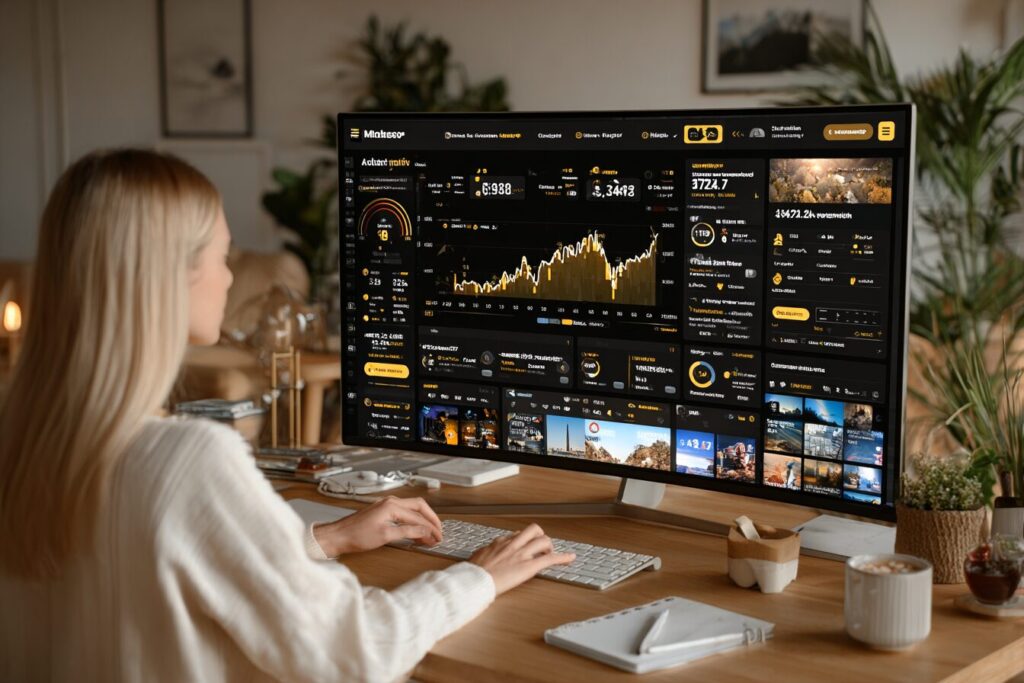Traffic is great, but conversion is what pays the bills.
If you’re getting visitors to your website but they aren’t turning into leads, customers, or booked calls, then you’re not experiencing the growth your business deserves. The good news? You don’t need a total redesign or six-figure ad budget to fix it. In fact, you can significantly increase your website’s conversion rate in just 30 days—with the right strategy.
This blog will walk you through a proven, step-by-step approach to optimize your website for conversion—so you can turn more traffic into revenue, without guesswork or fluff.
Why Your Website Isn’t Converting
Most websites fail to convert because of one (or more) of the following issues:
- Unclear value proposition
- Poor user experience (UX)
- Slow loading speed
- Lack of trust signals
- Weak or missing CTAs
- Irrelevant or confusing copy
Understanding the bottlenecks is the first step. Then comes the fun part: fixing them.
Week-by-Week Plan to Increase Your Website’s Conversion Rate
Here’s a practical 30-day plan to turn your site into a conversion machine.
Week 1: Analyze and Benchmark
Before you can improve your conversion rate, you need to know where you stand.
Step 1: Audit Your Current Website
Use tools like:
- Google Analytics (track bounce rates, time on site, exits)
- Hotjar or Clarity (record visitor sessions, heatmaps)
- GTMetrix (page speed insights)
Step 2: Identify Drop-Off Points
Look at your most visited pages and identify where users are leaving or not taking action.
Step 3: Set SMART Conversion Goals
Examples:
- Increase lead form submissions by 25%
- Reduce bounce rate on landing pages by 15%
- Increase product demo bookings from 10 to 20 per month
Week 2: Optimize Your Messaging & Design
Now that you know what’s broken, fix the foundation.
Step 4: Clarify Your Value Proposition
Ask: “What makes us the obvious choice?” Display the answer above the fold on every landing page.
Step 5: Improve Copy for Clarity and Action
Good copy is:
- Clear
- Concise
- Customer-focused
Use power words, testimonials, social proof, and scarcity triggers to influence conversion behavior.
Step 6: Simplify Navigation and Layout
Avoid distractions. Remove unnecessary links, clutter, and redundant steps.
Step 7: Improve Mobile Responsiveness
80% of visitors are mobile-first. Make sure your site loads quickly and functions flawlessly on phones and tablets.
Week 3: Fix the Funnel Flow
Time to focus on conversion mechanics and user experience.
Step 8: Use Conversion-Focused CTAs
Your CTAs should:
- Be clear and benefit-driven (e.g., “Get My Free Audit” vs. “Submit”)
- Stand out visually
- Appear multiple times per page
Step 9: Add Trust Signals
- Testimonials with real photos
- Client logos
- Case studies
- Secure checkout icons
- Guarantees
Step 10: Use Lead Magnets & Exit Intent Pop-Ups
Offer value before asking for commitment:
- Free checklist
- Downloadable guide
- Audit or discovery call
Trigger exit pop-ups with helpful offers to retain abandoning visitors.
Step 11: Enable Live Chat or Chatbots
Instant support can dramatically improve conversion by addressing objections in real-time.
Week 4: Test, Iterate, and Automate
Step 12: Run A/B Tests
Test variations of:
- Headlines
- CTA buttons
- Images
- Page layout
Use tools like Google Optimize, VWO, or Optimizely.
Step 13: Speed Up Your Website
Compress images, enable lazy loading, and use CDN services. A 1-second delay can reduce conversions by 7%.
Step 14: Integrate with CRM & Automation Tools
Ensure form submissions are integrated with your email list, CRM, or booking system.
Step 15: Review, Report & Refine
End the month by analyzing:
- New conversion rates
- What changes made the biggest difference
- What to scale or test next

How Digital Panda Media Helps You Optimize for Conversion
At Digital Panda Media, we specialize in turning underperforming websites into high-performing conversion assets.
Our team handles:
- Full website audits and heatmap analysis
- UX/UI redesign for mobile and desktop
- Copywriting optimized for buyer psychology
- Funnel integration with CRMs and automation tools
- Continuous A/B testing and analytics review
We don’t just guess—we test, track, and optimize until your site performs at its peak.
FAQs About Website Conversion Optimization
1. What is a good website conversion rate?
It depends on your industry, but 2% to 5% is average. Optimized sites often reach 10% or more.
2. How do I know if my site has a conversion problem?
High traffic but low leads or sales is a strong sign. Also watch for high bounce rates or short session times.
3. Can design alone boost conversions?
Design helps, but it’s the combination of clear messaging, trust, usability, and targeted CTAs that drives results.
4. How long before I see results?
With focused effort, you can start seeing improvements in as little as 2 weeks. Measurable growth within 30 days is very realistic.
5. Do I need a new website to fix conversions?
Not always. Many sites just need optimization of existing pages and content.
Conclusion: Small Changes. Big Conversion Wins.
You don’t need a massive overhaul to improve your website. You need a focused plan, clear messaging, and intentional design choices that guide your visitors to act.
Within 30 days, you can increase your website’s conversion rate dramatically—without spending a fortune on ads or dev work.
Ready to transform your website into a conversion engine?
Book a free website audit with Digital Panda Media. We’ll show you exactly what’s blocking conversions and how to fix it—fast.
Want to unlock your site’s full potential? Book your free audit or explore more insights on our blog.


Leave a Reply